30 Aug 2007
These are photos from the public drive on the McMurdo file server. There's hundreds of pictures on the drive at the moment, and following are my favorites.
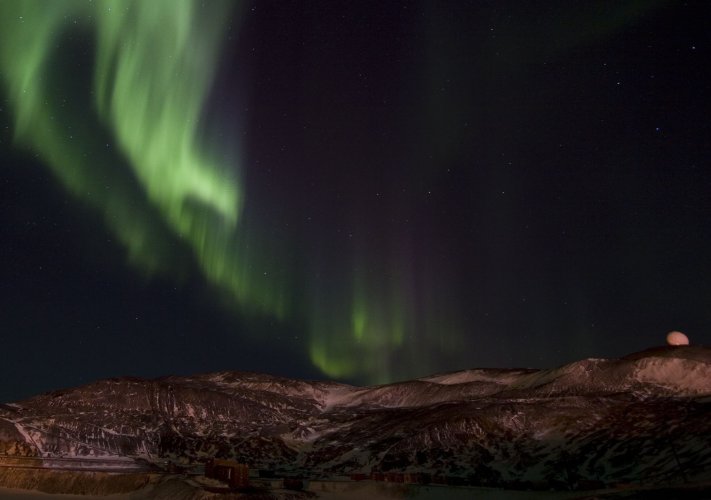
McMurdo Station is in a great geographic position to see the Southern Lights. Photographer unknown.
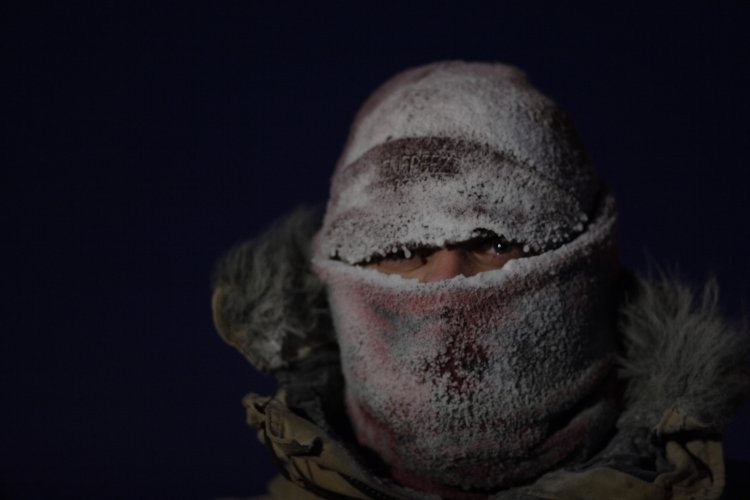
Our lineman working in winter. Photo by Chad Carpenter, an electrician.

One of the roads extending from McMurdo. Photographer unknown.

The Iridium satellites are all on polar orbits and consequently pass over us often. Sometimes they reflect the sun sharply, as shown in the above time-lapse photo. Photographer unknown.
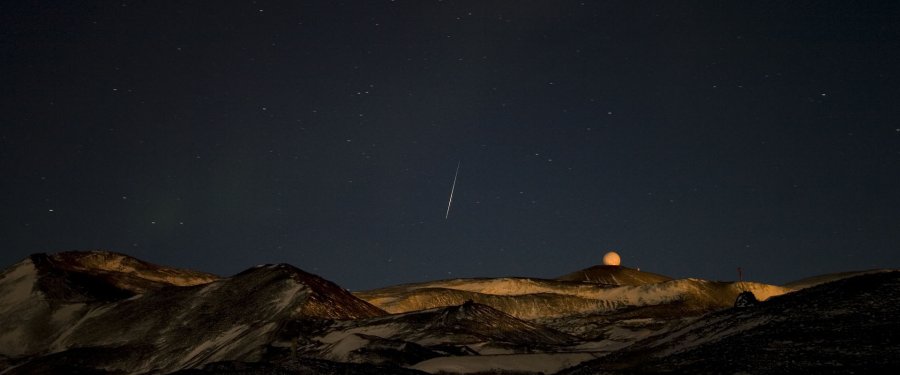
Another Iridium reflection flare. Photographer unknown.

A great shot of McMurdo Station in mid-July. McMurdo had a population of about 120 from February to August of 2007. Photo by Chad Carpenter.
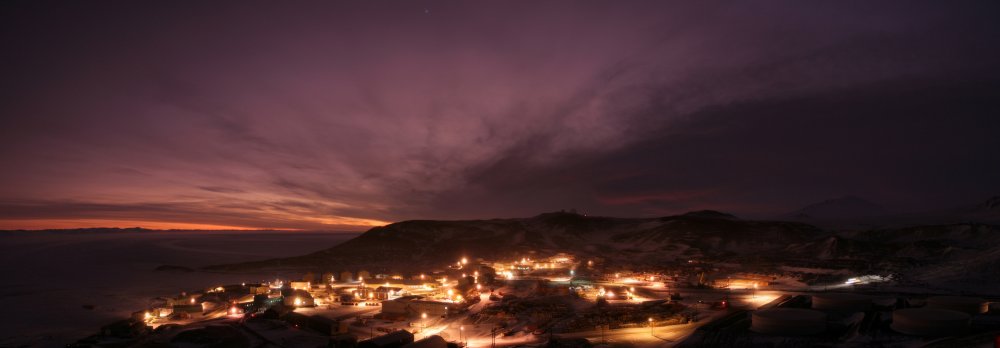
McMurdo in winter again. Photo by Chad Carpenter.
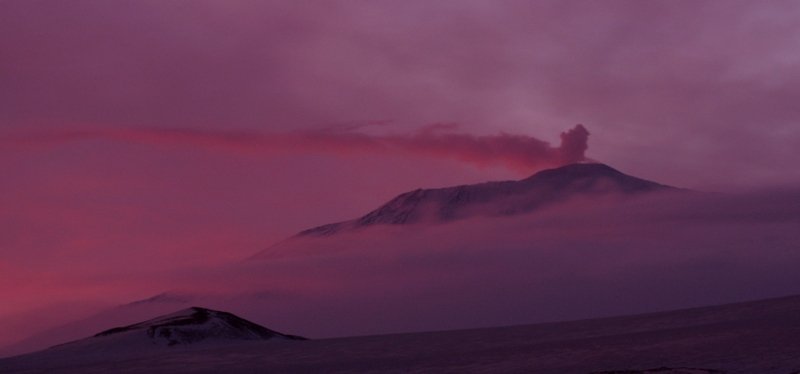
McMurdo is on the tip of the southern peninsula of Ross Island. The body of Ross Island is dominated by two mountains, Terror and Erebus, the latter which is seen in the above photo. Erebus is an active volcano. Photo by Chad Carpenter.

This is a shot from the ice south of Ross Island, looking straight at the southern tip of the peninsula on which McMurdo and Scott base are built. McMurdo is the group of lights on the left. Scott base is the group of lights on the right. Photo by Chad Carpenter.
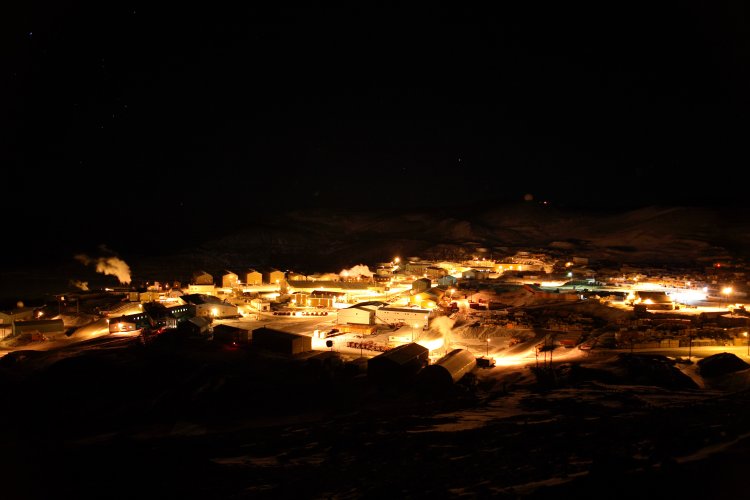
Another winter shot of McMurdo. Photo by Brian Cunningham?
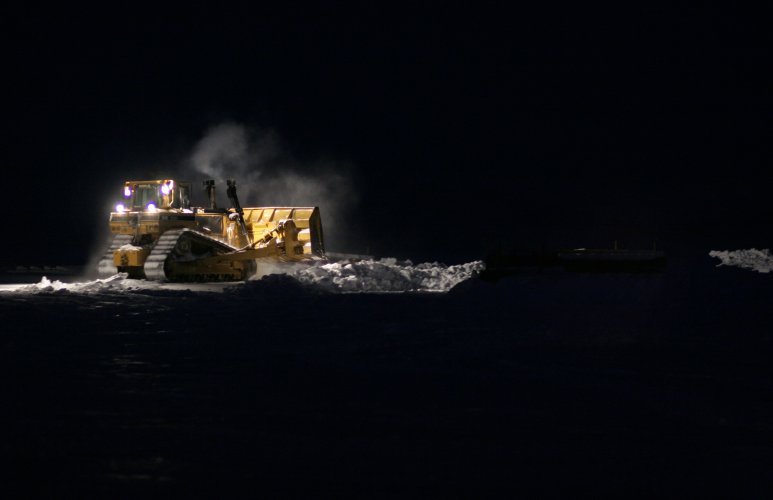
Heavy equipment working in the winter. Photo by Chad Carpenter.
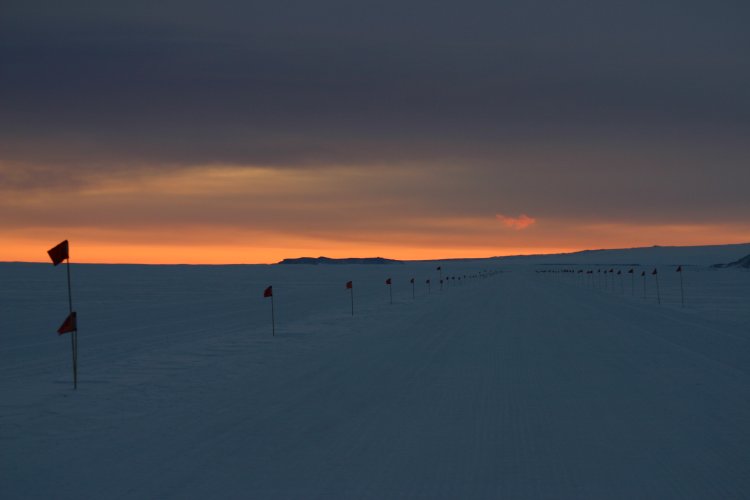
This is the road to Pegasus field, which is a single 10,000ft long, 150ft wide landing strip. Pegasus is 10 miles or so out of town, built of several inches of compacted snow atop ice flattened by heavy machinery. This ice is 100+ft thick ice that moves only a few feet a year and never melts or breaks up into icebergs. Wheeled aircraft such as C-17s land at Pegasus for WinFly flights (mid August) and the late part of summer (Dec-Mar). During early- and mid-summer wheeled aircraft will land on a field immediately adjacent to McMurdo. This adjacent field, the Sea Ice field, is closer and better outfitted, but the ice immediately adjacent to McMurdo is pack ice and will melt away, at which point wheeled aircraft will land at Pegasus again. There are two other fields: Williams field, for ski-equipped aircraft; and one emergency crash-landing field. I landed on Pegasus field in a C-17 on 20 August, the first flight or ship to reach McMurdo in 6 months. Photo by Rob Jones?
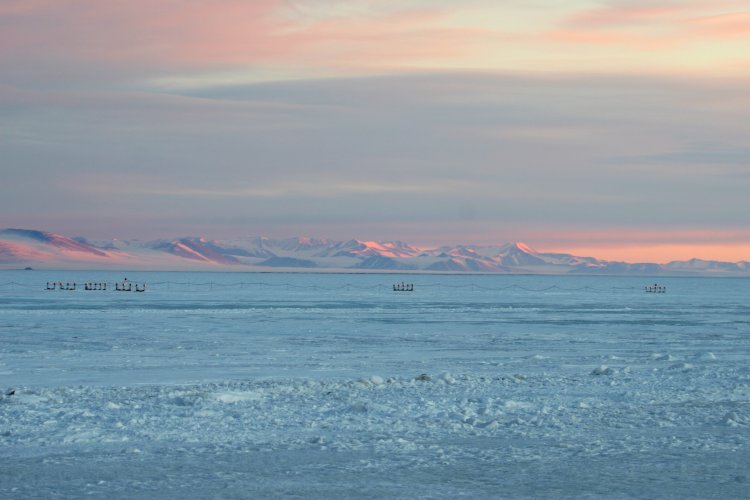
Pegasus field lights prior to the first aircraft of the season. The date of 20 August was largely chosen because it is one of the first days on which a plane can land and take off without night vision goggles. The planes try to come in at noon. The second WinFly flight this year was supposed to be a night vision landing made in the afternoon, which they have done in the past in emergencies, but it was called off. Photographer unknown.
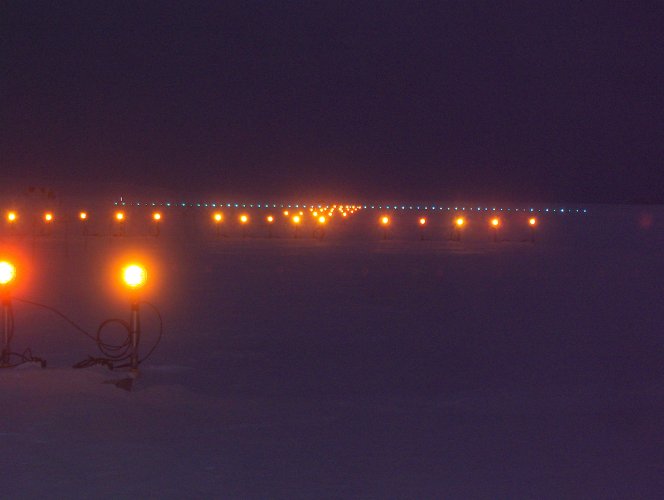
An afternoon or morning view of lights at Pegasus field. Photo by Wade Cunningham.
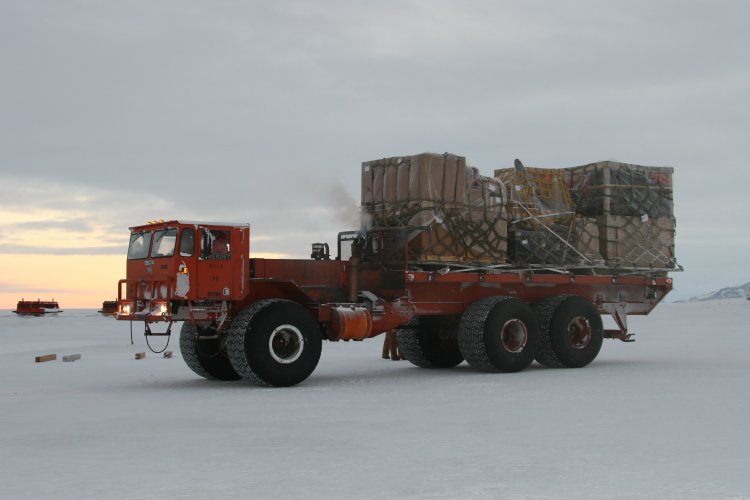
Pegasus field. One of the transport vehicles we use here, called a Delta. Photographer unknown.
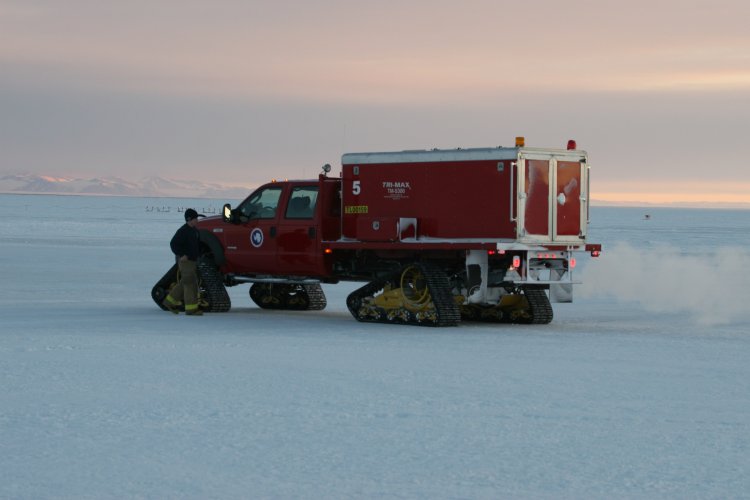
Fire and rescue truck at Pegasus. There's a seemingly disproportionate number of firefighters at McMurdo. One of their main jobs is to stand by at every aircraft arrival in case of disaster. Photographer unknown.
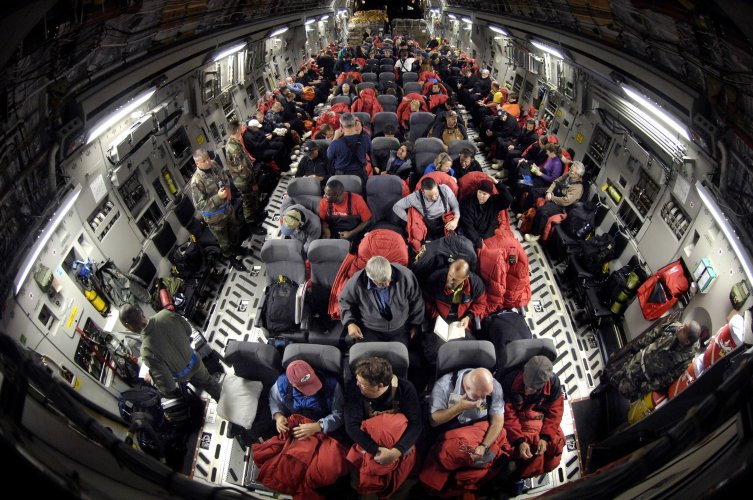
C-17s are turbofan cargo aircraft. The C-17 that completed the WinFly flights contained a mix of passenger seating and palletized cargo. The passenger seating is actually pretty good, especially compared to the C-130s I've flown on in Alaska. Most of the C-17 seats have far more leg room than a commercial business seat. Above is a view of the cabin during my flight from Christchurch to McMurdo on 20 August. Photo by one of the Air Force guys.
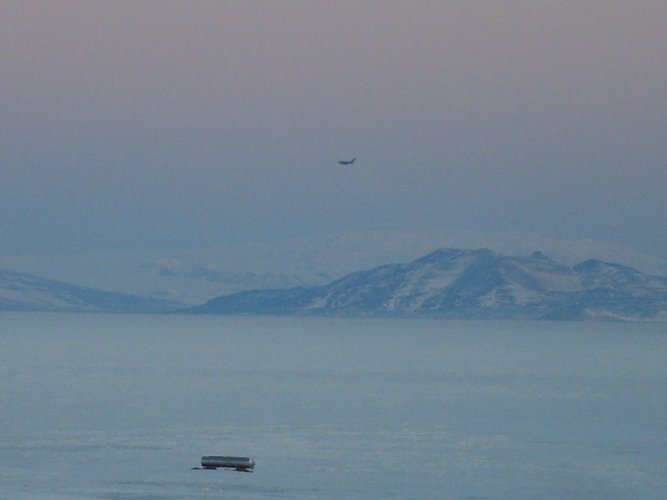
This is my plane on approach to Pegasus field. Photographer unknown.
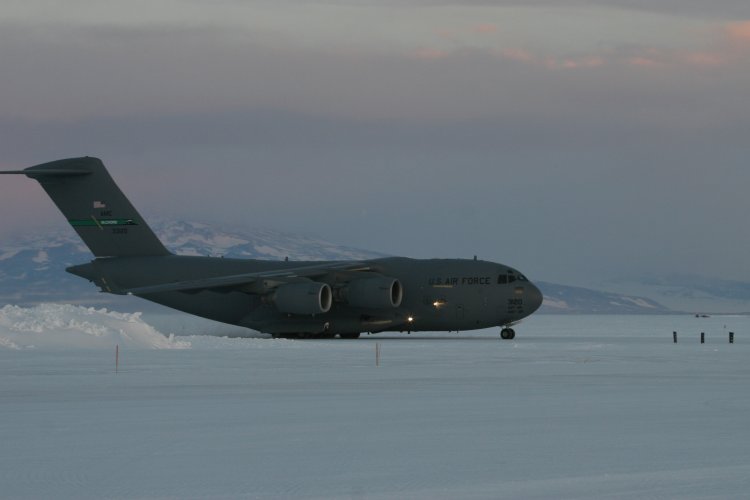
There were three scheduled flights and one medivac during the WinFly set of flights this year. I believe the same C-17 was used for each flight. Above is the C-17 on its second of four flights, taxiing on the ice. Photographer unknown.
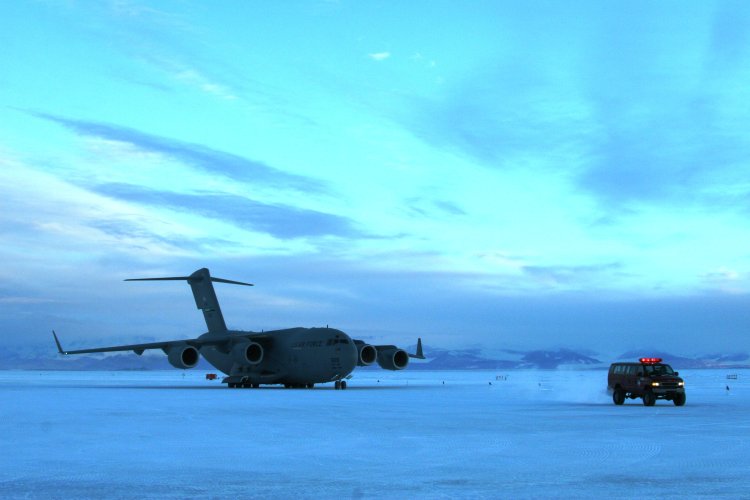
Taxiing. Photographer unknown.
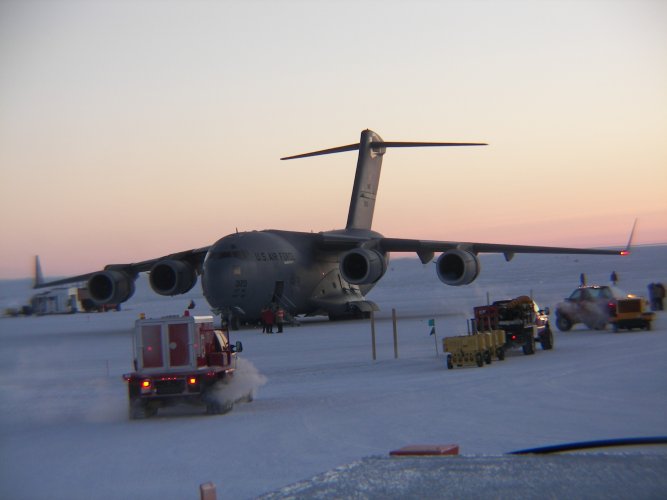
Meeting up with the support vehicles. Photo by Ed Saul.
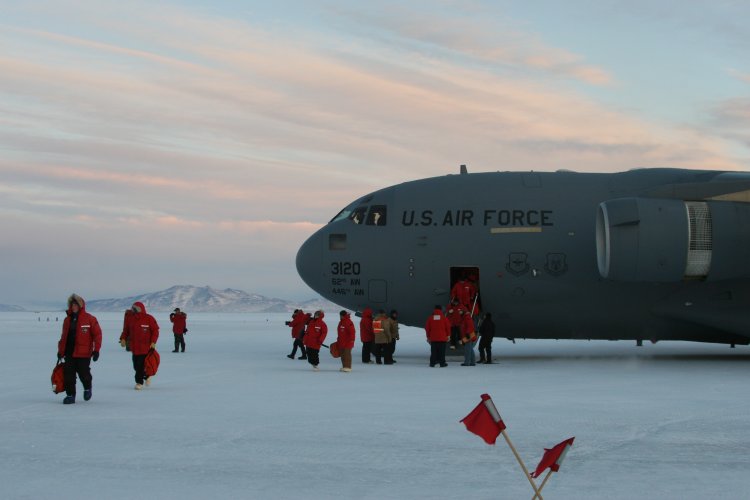
After landing at Pegasus field, the C-17 leaves as soon as it could so as to make sure it could take off during daylight hours, and because there is always a risk of an unexpected storm - the weather here changes fast. Photographer unknown.
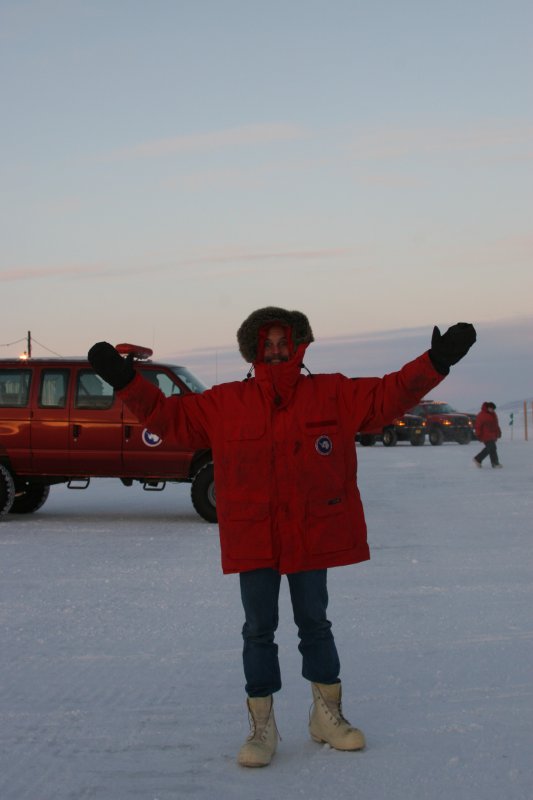
The people who spent the winter at McMurdo (winter-overs) hadn't had physical contact with the outside world in 6 months. Photographer unknown.
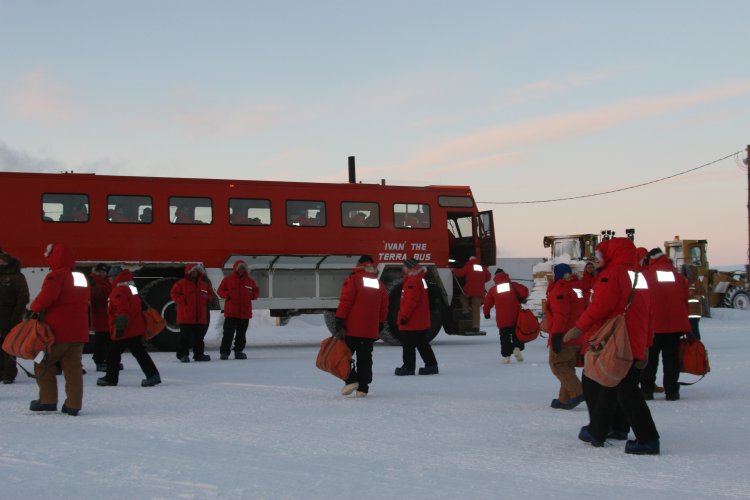
People coming off the plane are met by a fleet of vehicles, usually including the renowned Ivan The Terra Bus. Photographer unknown.
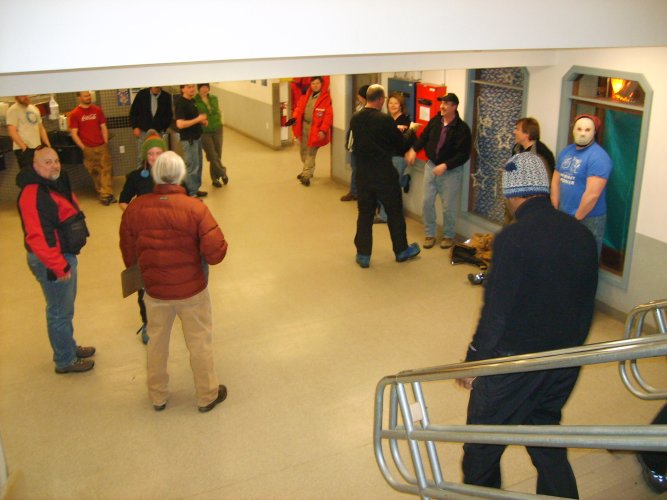
More winter-overs were waiting for us in building 155 where we got an arrival briefing. Photographer unknown.
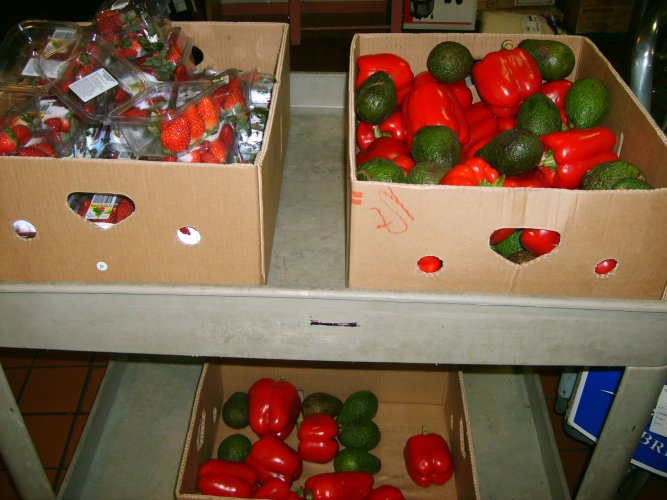
The winter-overs were happy to see new faces, but they were also waiting for the first fresh fruits and vegetables (freshies) in 6 months. This stuff was like gold. Photographer unknown.
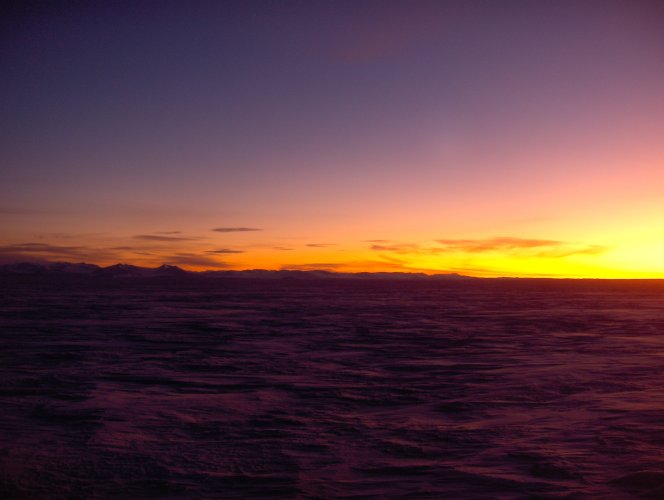
A view from Pegasus field. The ocean is frozen solid, but regular winds shape the snow into waves. Photo by Wade Cunningham.
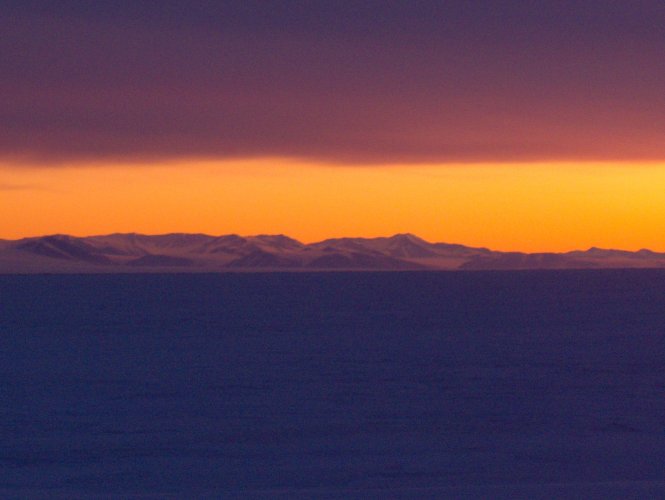
Another view from Pegasus field. Photo by Wade Cunningham.
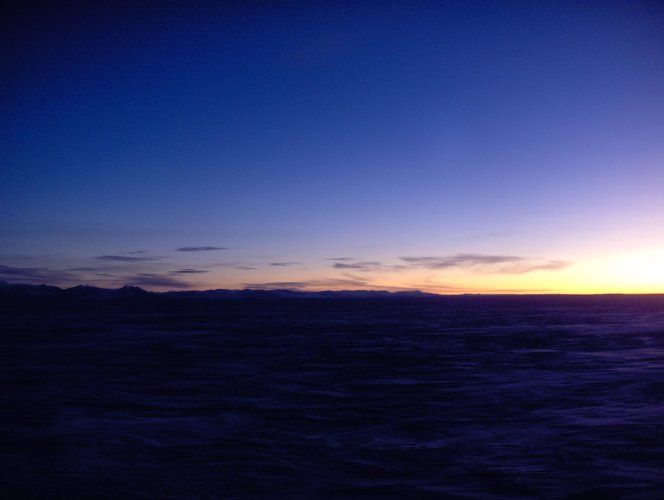
Another view from Pegasus field. Photo by Wade Cunningham.
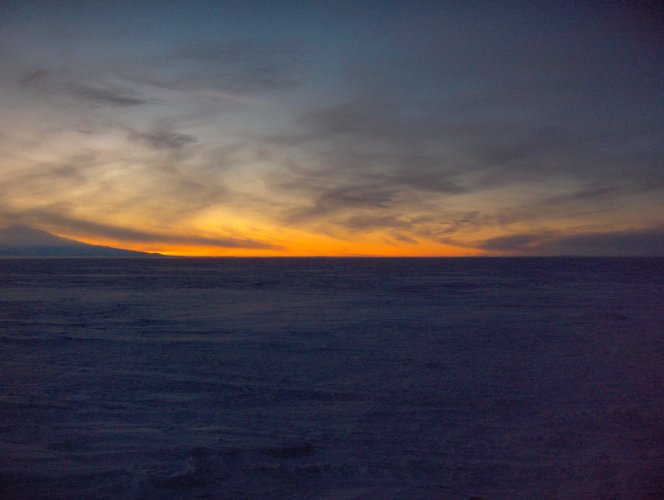
Another view from Pegasus field. Photo by Wade Cunningham.
That's all for now. Over time I'll add more picture pages like this, and I'll probably start taking my own pictures.
Back to main page.





















